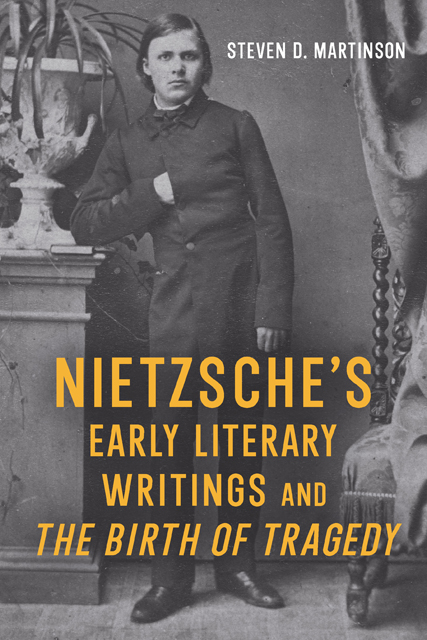Preface
Published online by Cambridge University Press: 17 December 2022
Summary
This is the first extensive English-language study of the literary writings by the early Friedrich Nietzsche, “early” meaning up through the publication of his first major work, The Birth of Tragedy Out of the Spirit of Music in January 1872. The purpose of this study is to provide scholars and general readers with background information on those works along with English translations and interpretations of them, with the hope of making the works more accessible and opening up new facets of them. The introduction contains an overview of the life and work of the early Nietzsche. Almost all of the poetry, prose, and dramas I discuss are translated here for the first time. Most of the pieces discussed here were written between 1854 and 1864, that is, from the time Nietzsche lived in Naumburg to the time he graduated from the Schulpforta Gymnasium. Even though some of the drafts and completed works in the literary estate were school assignments, they reflect the boy's creativity and, at times, extraordinary insight. Nietzsche embedded his own poems in several of his major writings; he also assembled small collections of poetry throughout his career. In short, poetic creativity underlies and even drives much of Nietzsche's work from the beginning to the end of his career (see, for example, Dionysus-Dithyramben, 1888). The creative energy the early Nietzsche exhibits in his literary writings also drove the writing of his first major work, The Birth of Tragedy Out of the Spirit of Music. I offer a reading of that seminal essay in the light of his activities as a creative writer. My approach is primarily chronological, topical, and thematic.
Since there are a number of problems associated with Nietzsche's literary estate, scholars have tended to avoid it. I am aware of the problems and have attempted to overcome them in the course of my study. Since the literary estate contains numerous orthographical and grammatical errors that are Nietzsche's own, I leave them as they appear in the historical-critical edition of his works. I have also retained the angle brackets (“<” and “>”) used in the German historical-critical edition to denote where letters have been corrected and supplied by the editors. However, I have corrected a number of those errors when the script appears to be confusing.
- Type
- Chapter
- Information
- Publisher: Boydell & BrewerPrint publication year: 2022

